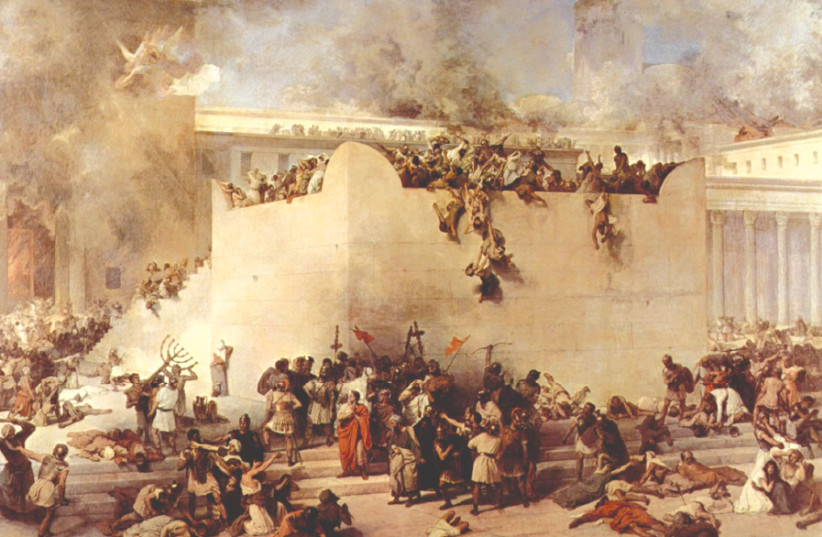I mourn and fast because – despite living in Eretz Yisrael, in a sovereign “Jewish state” and surrounded by material prosperity – I am in Exile. This is not simply a condition of Being, but of Alienation. I have a home, but I am not at Home; I and the Jewish People are homeless. No matter what we have, we are bereft; we are incomplete.
I mourn the loss of what was: the destruction of the first and second Temples, the place where God’s presence was revealed, the symbol of One God, the place of universal worship of Hashem. And I mourn what followed: the churban – the destruction of Jewish civilization in Eretz Yisrael, Jewish monarchy and true Jewish leadership, the Sanhedrin. The Temple was not simply a place to worship, but a place to be inspired to fulfill God’s Will. I mourn what could have been.
I mourn the Exile and Dispersion: the destruction of thousands of Jewish communities throughout the European Diaspora that were wiped out by Christians, persecutions, pogroms and expulsions. I mourn the Jews who were murdered only because they were Jews, who died al Kiddush Hashem (for the sanctification of God’s name).
I mourn for Israeli soldiers and civilians who were killed defending our country, who sacrificed their lives to protect us.
I mourn because I am helpless; I cannot comprehend the cruelty of some human beings, the tragedies and suffering that mark the history of the Jewish People, the meaninglessness and absurdity of the Holocaust.

Now what?
But should we seek to reconstitute what was, the form of Judaism that existed two thousand years ago, the Temple and the sacrifice of animals?
Jewish monarchy and the Sanhedrin guided the Jewish people and determined Jewish civilization at that time, but have we advanced; have we developed spiritually?
We have laid the foundations for the Third Jewish Commonwealth and created a new Jewish civilization centered in Israel, with a Jewish and democratic government – for better or worse – and a creative, vibrant, flourishing Jewish/Israeli culture.
Tisha Be’Av thrusts us into self-examination and into the most profound questions: What is the meaning and purpose of my life? How can I serve Hashem? Rebuilding The Temple and reinstituting animal sacrifices are not substitutes for the search for meaning. The creation of the State of Israel – out of the ashes of the Holocaust – was a momentous event that many believe heralded the beginning of a pre-Messianic period. It is, however, an ongoing process, a vision, a hope that seeks realization.
I mourn what was lost, and I anticipate the challenges that lay before us – our struggles, with failures and success, with sadness and joy.
We are part of a Jewish chain of Being that stretches back to Abraham and Sarah, Yitzhak and Rivka, Yaakov, Rachel and Leah, Moses and Miriam, our Prophets and leaders – Jewish civilizations and Jewish culture, Exile and our return to our homeland in Eretz Yisrael – to help us create God’s Presence in the world, to fulfill the promise of Redemption.
Recently, archeologists in Vilna, Lithuania discovered the buried remains of a synagogue from the 18th century, the era of the great Talmudic sages, Rabbi Eliyahu ben Shlomo Zalman, the Vilna Gaon (1720-1797) and his disciple, Rabbi Chaim ben Yitzhak from Volozhin (1749-1821). In the early 19th century, 500 of their students with their families made aliyah to Eretz Yisrael.
When an archeologist described the foundations, steps and pillars surrounding the place where the Aron Kodesh holding the Torah scrolls stood, and displayed a plaque that described the aliyah of one member of the community, I recalled my aliyah; I was there. And now I am here.
Tisha Be’Av asks the ultimate questions, the same ones which Job confronted: Why do we lose what is most precious? Why do we suffer? Where do we belong? How do we heal? Words and cries draw me inward; I mourn and I listen to the silenced.
